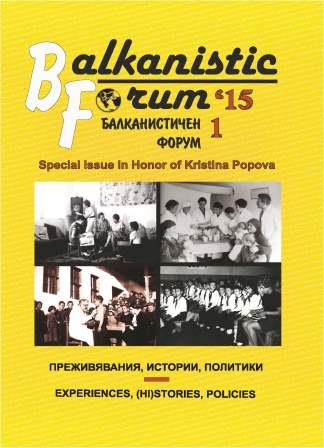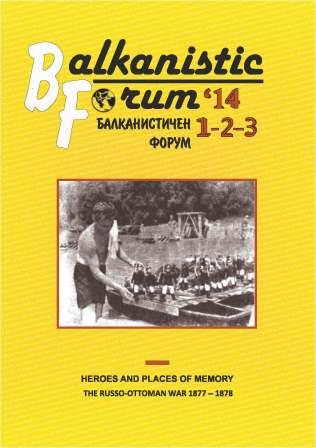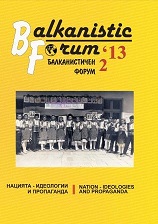
We kindly inform you that, as long as the subject affiliation of our 300.000+ articles is in progress, you might get unsufficient or no results on your third level or second level search. In this case, please broaden your search criteria.


The text aims at presenting the Yezidi community in the South Caucasus - Armenia and Georgia. Myths about the Yezdis abound. The epithet “devil-worshipper” – perhaps the most famous of the myths attributed to the Yezidis. The Yezidis are a small Kurmanji-speaking ethno-confessional group, the followers of an doctrine, called Yezidism or the Yezidi religion. They originate in northern Iraq and are distinguished from other Kurds by adherence to the Yezidi religion. The Yezidis of the South Caucasus form part of a larger Yezidi global community, located predominantly in the historic homeland of the Yezidi faith, northern Iraq, and also in Turkey, Syria and, increasingly, Western Europe. The Yezidis of the South Caucasus represent the second largest concentration of Yezidis worldwide.
More...
The paper examines the tradition of priests serving in the Russian army during the wars of the 19th century. We are especially interested in the legislation and function of priests of other than East Orthodox denominations: Catholicism, Protestantism, Islam, Judaism and others. Case studies of priests participating in the Russian-Ottoman War 1877-1878 are also presented.
More...
The text analyzes the origin, development and modification of official communist memoirs and historiographical narrative of the events of Ninth of September 1944. In this connection, a central place is given to the role of the so called Operative bureau and Todor Zhivkov, in particular, on the night of the coup. An attempt was made to trace the Myth of this structure and the very personality of the first party and state leader in the memories of contemporaries and participants and discrepancies in their versions.
More...
The confidence for writing the autobiographical story, partially displayed here, was gained during the work on the book with research texts entitled “Childhood during Communism” (2010). The direct and indirect role of Kristina Popova in this book is the main reason why the current memoir fragment is being dedicated to her.
More...
The authors research the Russian Orthodox tradition of military churches functioning as churches, military museums and often graveyards. The regiment churches related to the Russo-Ottoman War of 1877 – 1878 constructed between 1878 and 1913 are analyzed. Their memorial character is related to the practice that such churches were devoted to the saints celebrated in the days of the military units’ victories. It is reflected in the choice of subjects of the wall paintings; the choice of icons in the iconostasis; displayed memorial objects such as relicts, regiment banners, parade uniforms of Emperors and Grand Dukes, weapons, medals, memorial signs (special ribbons, hats), trophies taken from the enemies in successful operations (fortress keys, banners, weapons), icons and church plates from the camp church of the regiment.
More...
War has always been one of the most common subjects of visual representation but the medial channels have developed a lot since the Russo-Ottoman War of 1877 – 1878. The present article gives an overview over the Russian visualization of the war in form of popular prints and fine arts at the times of the war itself, to the emergence of film and the embedding of Soviet/Russian film in the genre of the historical epic, prominently visualizing the respective nation’s history. The Soviet influence on Eastern European cinema is high-lighted as well as the significance of the reemerging Russian cinema on the picking up of the war as a central motive is at the end of the 1990s. The production of full-length films, TV-serials and documentaries as well as the organization of prominent exhibitions about the Russo-Ottoman War clearly show that the war and its related narratives have become an important part of Russia’s popular culture again.
More...
The process of the formation of social memory to the last Russo-Ottoman War in the different periods of Russian history has been considered for this article. The memory culture concerning the events and personalities of the Russo-Ottoman War has been researched on. A variety of memorial places related to both the different historical periods and the socio-cultural conditions of their origin, degree of preservation and popularization have been outlined.
More...
The purpose of this paper is to present the Bulgarian-Soviet production of the first feature film about the Russo-Ottoman War of 1877 – 1878 called “Heroes of Šipka” in the light of the newly discovered archival traces. “Heroes of Šipka” is designed and realized as a model and template for the Bulgarian national cinema – with a Soviet script, direction and performance but with Bulgarian funding and on Bulgarian soil. I elaborate on the relations and dependencies in an otherwise coproduced film. Official documents by Bulgarian institutions do not unilaterally outline the three stages of influence and dependence. The first one is the effective selection of the theme of the Russo-Ottoman War of 1877 – 1878. The second one is the use of the topic for the second “liberation” of Bulgaria in 1944 and the perpetuation of the myth of the “double liberators”. The third one is the creation of bilateral teams as the Soviet school served as a guideline for the qualification of Bulgarian filmmakers. We discovered details that show the ambiguity of this dependence with examples of Bulgarian activities and the Soviet help and protection, which often was sought and not only imposed on Bulgaria.
More...
This paper elaborates the history of the construction of one of the largest monuments for the Russo-Ottoman War 1877 – 1878 in Bulgaria – Panorama “The Epopee of Pleven 1877”. Surely this has been the most spectacular memorial war site from the Communist era in Bulgaria. Within the context of the ideology at that time, The Panorama was primarily “a symbolic monument of the Bulgarian-Soviet Friendship”. The panorama was constructed in honor of the 100th anniversary of the Pleven Battle and was officially inaugurated on 10 December 1977.
More...
School excursions were introduced in Bulgaria by the Minister of Education Konstantin Veličkov (1855 – 1907) in 1896. He was inspired by Johann Friedrich Herbart’s ideas about “experience-based education” and aimed to “expand the horizon” of the pupils. The excursions’ statistics pointed out that among the most frequently visited places were the memory places to the Russo-Ottoman War of 1877 – 1878 as well as places presenting the industrial progress in Bulgaria. By analyzing the school trip experiences, observations published in the journal “School review” and the school annuals, one can draw the conclusion that school excursions at the beginning of the 20th century created a space of new knowledge, social entertainment and emotional experience. As a result of these trips, on a mental map places of memory of the Russo-Ottoman War were connected to modern enterprises and state power institutions, which shaped the Bulgarian landscape as symbols of heroic past, nature’s beauty and national progress.
More...
The present volume constitutes one of the scholarly outputs of the EU-funded Marie Curie project “Politics of Memory and Memory Cultures of the Russian-Ottoman War 1877/1878: From Divergence to Dialogue” (MEMORYROW). This project started working on 1 February 2012 and will last until the end of January 2016. The project’s consortium consists of eight scientific institutions from eight countries, which are historically more or less strongly related to the events of this epoch-making war. The project’s leadership rests on the Centre for Southeast European History and Anthropology at University of Graz. However, the initiative came from the Balkanistic Seminar at Southwest University of Blagoevgrad. The other partner institutions are the Institute of National History “Ss Cyril and Methodius in Skopje”, the Department of Modern and Contemporary History, Folklore and Social Anthropology at Aristotle University of Thessaloniki, the Department of History at the Istanbul based Bilgi University, the Shota Rustaveli University of Batumi, the National Academy of Sciences of Armenia in Yerevan and the North-Caucasus Federal University of Stavropol'.
More...
The Hill of Honor, located between the town of Gyumri and its fortress, be-came an official garrison cemetery after the Russo-Ottoman War of 1877 – 1878 and after the construction and sanctification of a chapel on the hill. A considerable amount of Russian soldiers was stationed at the then so-called town of Aleksandropolˈ, where also the main military hospital was located. The present article sheds light on the circumstances of the construction and consecration of the chapel, which led to the place becoming a central point of remembrance to the Russo-Ottoman War. The article also considers the fate of the Hill of Honor throughout the Soviet period, especially focusing on the 1950s, when the systematic destruction of the monument was ordered by local authorities. At last information is given on the situation today, as the restoration of the Hill of Honor had been planned and conducted in the last decade and led to the monument’s reopening in 2010.
More...
We focused our research on the first steps of the Russian state towards raising 303 gravestone-monuments immediately after the ROW in 1878. The history of the first Russian monuments devoted to the Russo-Ottoman War reveals the lack of any Bulgarian tradition of memory culture in the first decades after the war. The first memorial places were imported from abroad, from the victorious Russian Empire, and were marked by the tradition of the Russian religious memory culture. Depending on the Bulgarian-Russian and later Bulgarian-Soviet relations the monuments changed their meaning and function being reinterpreted in accordance to the political situations.
More...
The present article gives an overview of the reflection of the Russo-Ottoman War of 1877 – 1878 in Armenia’s periodical press. War-related publications in Armenia’s most important newspapers have been reviewed exclusively and include articles issued in Constantinople, Smyrna, Nicomedia, Tbilisi, and Baku, and therefore points of view from both the Western and Eastern Armenian sides. Of special interest is the situation of the Armenian press in the center of the Ottoman Empire – the Armenian press in Constantinople. The article furthermore shows that the journals and newspaper addressed a great variety of topics, still having the Armenian questions constantly on their agenda, which manifested itself also after the War of 1877 – 1878, when the periodical press pointed out that there was no reason for vengeance by the Kurdish or Turkish population since it was especially Armenian peasants, who supported them during the war at the cost of significant personal sacrifices.
More...

The article follows the development of nationalist narratives on Aziziye Bastions and Nene Hatun in relation to the Russo-Ottoman War of 1877 – 1878 and how they were represented in nationalist historiography. We propose to look at the changes that the Aziziye Bastions underwent, in comparison to other bastions after they had become obsolete for military purposes and were slowly re-constructed in terms of a popular national narrative as a place to remember that “glorious” history in conjunction with the “heroine” cult of Nene Hatun and monumentalizing effects of these developments.
More...
Muslim women became an object of the Communist Party politics in Bulgaria during the time of four decades. The relative closed live in their communities, the religiosity, which contradicted the official communist ideology as well as the esthetic confrontation with the socialist ideal of modern women made the Muslim women a group difficult to be controlled. Under the slogan of modernization of Muslim Women several measures were implemented: special courses, courses for improvement the everyday life and qualification, measures at-tracting women to became members of the Communist Youth Union and the Communist Party.
More...
The study offers an outline of the political context in which the Handbook appeared - the preparation of the so called “revival process” of violent assimilation of the Bulgarian speaking Muslims (Pomaks) in the 1970s. The language and the main postulates of the Handbook have been analyzed in the frame of the theory of the totalitarian newspeak and mentality. The criticism on Islam exploited the rhetoric of anthropology, medicine, hygiene, modernization and patriotism to stigmatize the Holy Book of Islam, the main pillars of Islam, Islam practices, family and the position of women, denying any moral values to Islam. The arguments are supported by a mixture of historical facts, ideology clichés, folk legends, fiction and false quotations of the Quran. To answer the criticism, the author uses quotations of legitimate translations of the Quran, research on Ottoman archives, and the achievements of Islamic feminism and modernism.
More...